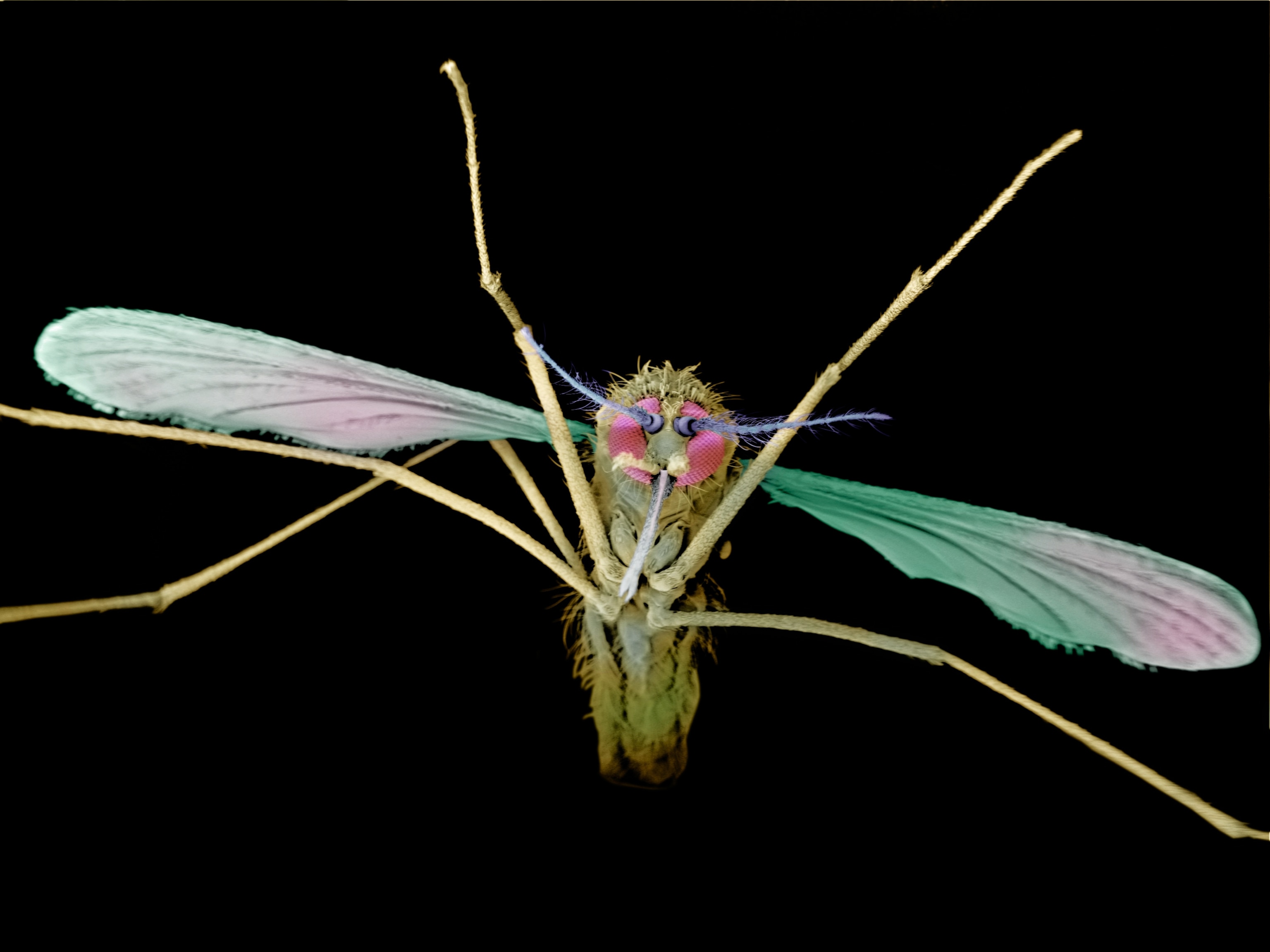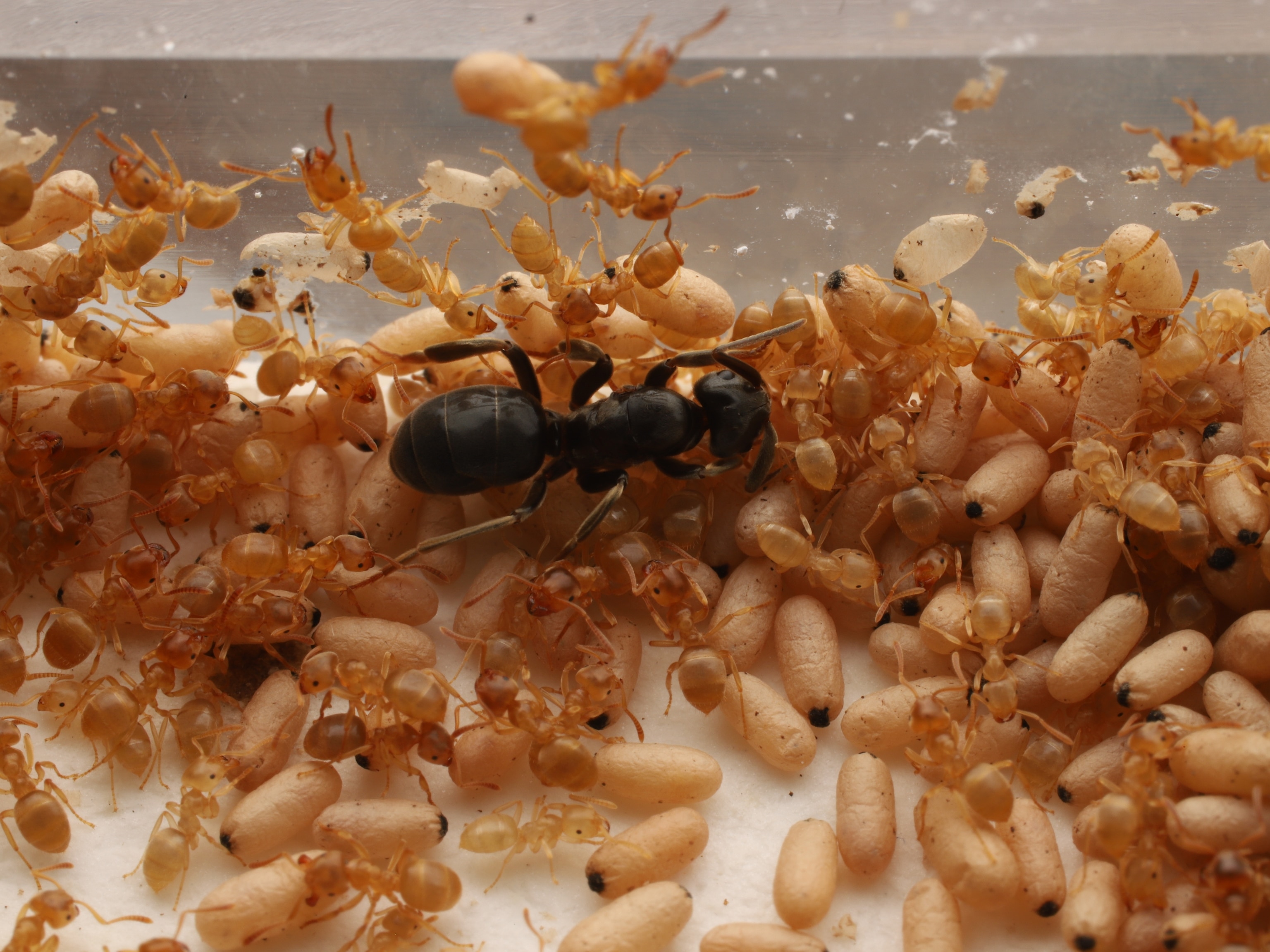
World's Biggest Hornet: Insect Behind Deadly Attacks
Experts unsure why aggressive insects are attacking people.
The world's biggest hornet is wreaking havoc in northwestern China, where 42 people have died after being swarmed and stung in Shaanxi Province, according to the Chinese news agency Xinhua.
Some 1,600 others have been injured since the outbreak of the Asian giant hornet (Vespa mandarinia) began in July, the regional health authority reported, and attacks continue even as local authorities take action, including destroying hundreds of hives and improving medical treatment for victims. (Watch a video of "hornets from hell.")
"The problem with this particular hornet is that it's big, sort of thumb-sized, and it packs a lot of venom," said entomologist Lynn Kimsey, director of the Bohart Museum of Entomology at the University of California, Davis.
"And its nests get fairly large, including maybe several hundred individuals. They are aggressive, they are predatory, and they have been known to kill and eat an entire colony of honeybees," she said.
At 1.5 to 2 inches (4 to 5 centimeters) long, the giant hornets are found across many parts of East and Southeast Asia and are especially well known in Japan. They're among the more dangerous venomous insects of their type, Kimsey said, though others, like Africanized bees and yellow jackets, can cause similar problems.
Bee-Loving Hornets
While the hornets don't typically swarm humans in such numbers, they're well known for their ability to quickly decimate a hive of thousands of honeybees, leaving behind a trail of severed heads and limbs.
The hornets routinely fly miles from their nests and employ scouts to locate a bee colony and then mark it with a special pheromone that attracts their allies to attack, destroy, and occupy the hive.
With their huge size advantage, the hornets typically make short work of the bees, unless the victims are able to eliminate the advance scout before it can summon others. They sometimes do so with an incredible defense—swarming the hornet in a ball and literally cooking it to death.
Often, however, the bees and other insect victims become fodder for the growth of the hornet hive. Adult workers chew their victims' flesh into a nutritious paste that feeds larvae, which in turn produces saliva that serves as a powerful "energy drink" to be consumed by adults who cannot digest solid protein.
Why Are Hornets Attacking People?
It's unclear exactly what factor or factors has led to the hornets' deadly season of human attacks.
Huang Rongyao, an insect expert with the Forestry Bureau of Ankang City, told Xinhua that local vegetation growth has increased hornet habitat, and that two months of hot weather have made the insects much more active. Ankang is one of the cities most affected by hornet attacks, along with Hanzhong and Shangluo.
Hua Baozhen, an entomologist at China's Northwest Agriculture and Forestry University, pinpointed a decrease in populations of the insect's natural enemies like spiders and birds, while other experts speculate that urban sprawl simply means more people are living in what was formerly hornet country.
Kimsey noted that this type of behavior is often seen with invasive species, though she's not sure if the hornet is native to the region or how long it may have been there.
"What we see happen when you get a newly introduced species is that it may sort of go along relatively unnoticed for years, but then eventually you see a huge outbreak. We have that happening in California, where the European paper wasp was introduced 20 years ago, and now suddenly it's an outbreak and they are everywhere."
If the hornets are in fact natives, Kimsey added, this year's weather probably does play a major part in the outbreak. "In that case I'd suspect that they had a very mild winter and spring, so that a lot of queens survived and consequently they now have many more nests than they normally would have."
That scenario also has parallels in the U.S. she added, like the western yellow jacket, whose numbers have risen to "spectacular" levels in California due to recent milder weather. (Also see "Stinging Wasps Moving North Due to Warming?")
Mating Season
In addition, autumn is mating season for hornets, which can make them more aggressive, particularly toward the end of the process, UC-Davis's Kimsey said.
"Right now if it's getting towards the end of the season, they are irritable. They are not producing a new brood, and there are a lot of workers not doing much of anything."
Once a queen has been fertilized, a typical hive begins to shut down with the approach of cool weather; the workers will die off while the queen finds a place to overwinter.
Xinhua reported that hives in the region typically go dormant by December, though attacks are expected to taper off sooner, perhaps by the end of the month. In the spring, hornet queens will begin new nesting colonies with offspring numbering in the thousands.
Deadly Attacks
In the meantime, staying well clear of the hornets is the best route to safety, experts advise, but that's often easier said than done.
The insect often locates nests underground or even on buildings, which puts them directly in human territory. Disturbing them or merely passing too close for the hornets' comfort can unleash a fierce retaliation. Some attacks seem especially unprovoked. In September, Xinhua reported that a swarm attacked a school in southern China, injuring 30 people—all but one of whom had to be hospitalized with multiple stings.
"If you inadvertently disturb a nest, they will come out en masse and you could get lots and lots of stings," Kimsey said, noting that the insect is proving deadly in much the same way a swarm of Africanized honeybees might. (Watch video: "Beware the Giant Hornets.")
"Even if you're not allergic, the amount of foreign protein that circulates in your blood after so many stings can cause kidney failure. It's like sepsis, and if you don't get on dialysis you can die.
"People are probably dying because they aren't receiving the appropriate treatment in time," she added.
"And many Chinese doctors probably don't know exactly how to treat this problem, just as many doctors wouldn't in this country."








